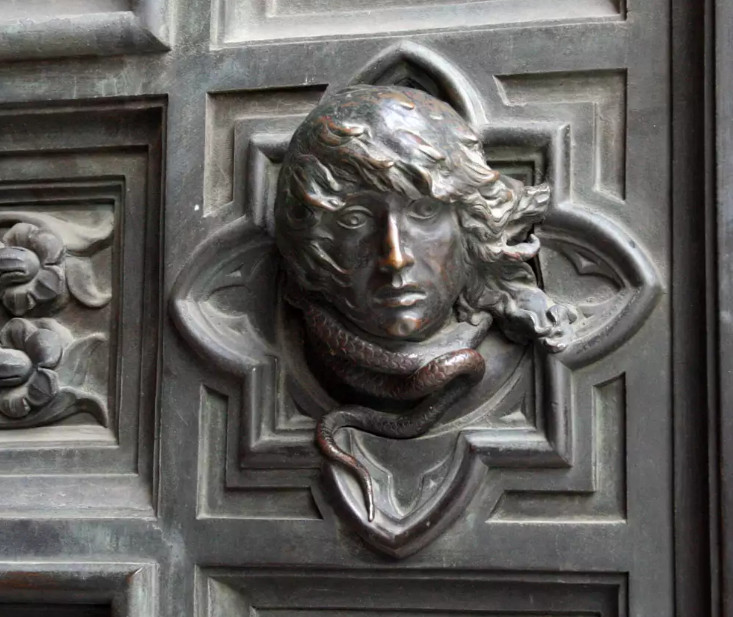The particular self-portrait
The particular self-portrait of Giuseppe Cassioli
AVE YOU EVER NOTICED.
The particular self-portrait of Giuseppe Cassioli on one of the panels of the right door of the Cathedral of Santa Maria del Fiore?
As you can notice from the photo, a snake coils the neck of the sculptor who cast the door.
It's a little bit strange because the Cathedral and the three doors too are entirely dedicated to the Virgin Mary. No, not at all because the artist wants to tell us the terrible experience he lived in 1885.
The facade for the Cathedral was completed in 1887 but the three bronze doors didn't exist. In the same years Amos and Giuseppe Cassioli received the commission for the new work. Amos died in 1891 and he never worked at its edification so Giuseppe, his son, was only 26 years old and he had to go on alone. He was obsessed: he didn't feel fit for the purpose and he had a lot of debts too. He needed 7 years only to complete the model. In 1898 Giuseppe cast the door and he appositely opened his own foundry. He was even more full of debts; for this reason the model and the wax he employed to cast it were confiscated. In 1897 his contract terminated and only in 1899 through a new agreement the door was finally completed. Giuseppe lived 12 terrible years: he felt psychologically down. This is why he depicted himself with a snake intent on strangle him!
Altri articoli

The stone of the outrage
From 1282 priors were representatives of the seven Major guilds: they fighted against the old aristocratic families revenging an active role of trade in Florence.

Michelangelo and the secret room.
The artist drew even his self-portrait depicting the attitude of an imprisoned man.

Do you know a secret passage?
In 1877 the secret passage was accessible: four thousands and five hundreds of people crossed it paying twenty-five cents each one!

Mary and Mario
The Porte Sante Cemetery, a final rest for many, symbolizes love, loss, and the eternal beauty of Florence through its storied inhabitants.


